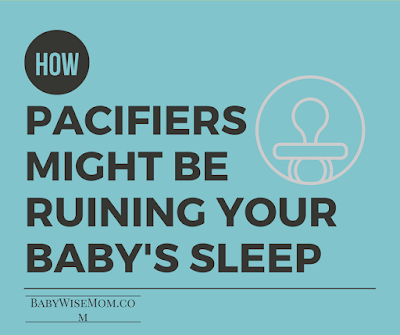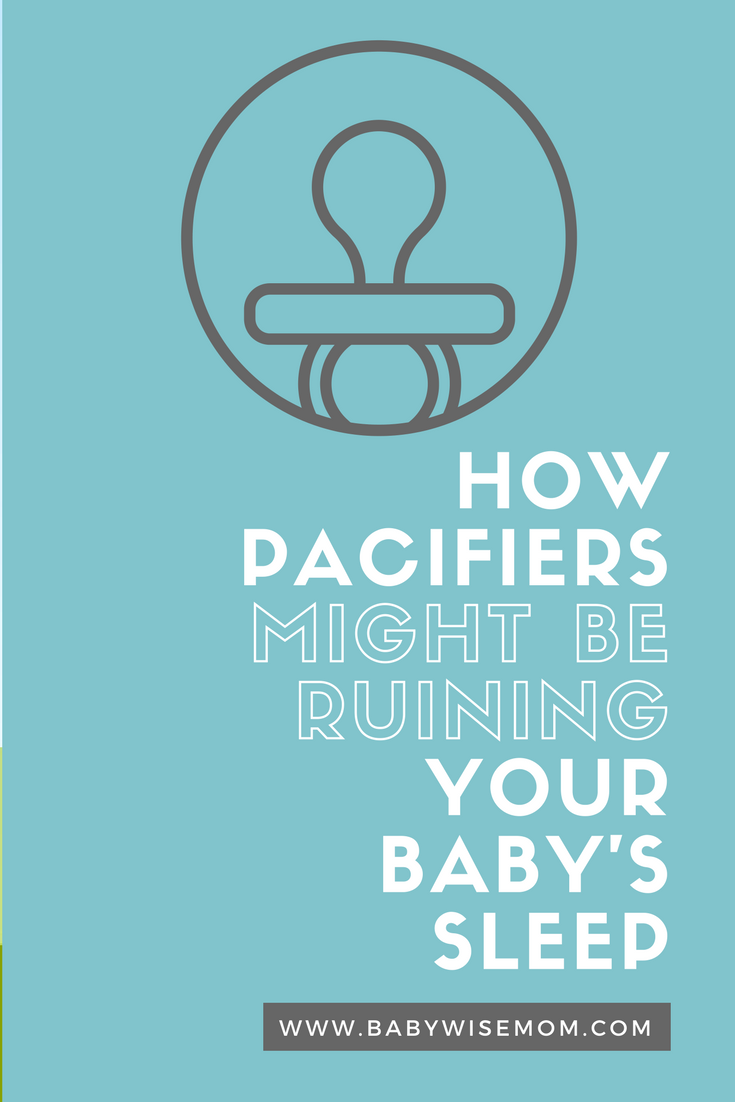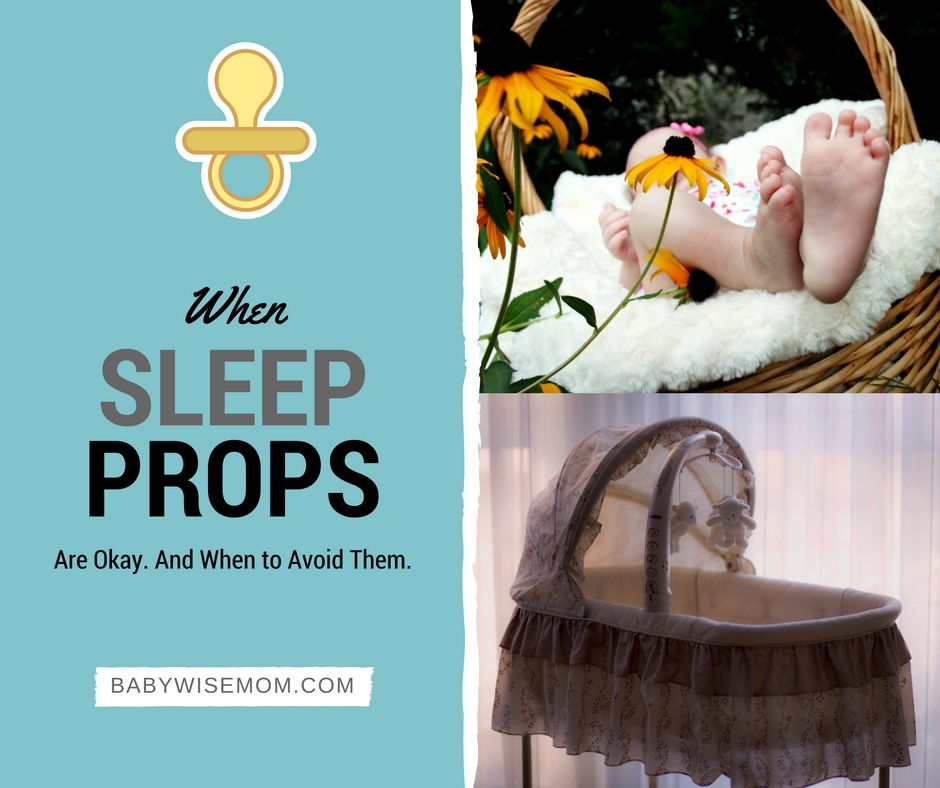
The pacifier might be ruining your baby’s sleep. Sound odd? The pacifier is supposed to help soothe your baby and help her sleep better, right? How can it possibly be ruining it?
It is quite simple. Your little baby falls asleep with the aid of sucking on the pacifier. Once she falls asleep, the pacifier eventually pops out of her mouth.
Every 45ish minutes, a sleep transition happens. This is when the body moves from one type of sleep to the next. The body basically wakes up, or almost does, and slips into the next sleep state.
This transition moment is where your troubles can come. If your child wakes up enough, but doesn’t have the pacifier in the mouth, then your child will not be able to fall back asleep into the next sleep cycle. Your child is only able to fall asleep with the pacifier in the mouth, so she just comes to be fully awake.
This is most commonly an issue right around 3/4 months old and continues to be one until your child can find the pacifier and reinsert it, which typically happens around 6-8 months old.

So what are your options?
- Wean from pacifier–that means stop using it.
- Wait for your baby to be old enough to find the pacifier. Until then, you go in and reinsert.
- Try for a middle ground between one and two.
Most parents who say the pacifier did not interfere with sleep report that they do not play the reinsert game. They give the child the pacifier initially. If it falls out, they might reinsert one time. After that, no more reinserting (for that nap). This is a combo pacifier use/cry it out approach.
The solution you choose is totally up to you. This is your call based on what you think your child can handle and what you want to work toward.
If you wean from the pacifier, you are likely in for some cry it out. The plus side would be that you will result in a baby who can fall asleep and stay asleep unassisted, which means more sleep for baby and you. The downside is cry it out process is no fun.
>>>Read: Weaning from the Pacifier: When, Why, and How
If you wait for the baby to be old enough to find and reinsert the pacifier, your upside is no sleep training process. The downside is that you are in for several more months of waking in the night and having short naps.
The middle ground allows you to still use the pacifier, which a lot of people like. They want to prevent thumb or finger sucking. It also uses some cry it out, so you should lead to a better sleeper who can sleep with the pacifier but can also sleep independently.
Decide which pros and which cons you want all around and take action toward that solution. You can always try a different solution later if the first one doesn’t work out.
Some parents successfully use the pacifier as a sleep tool rather than a prop. Read all about that process here.
Pacifier Tips from the Baby Whisperer
A basic summary of Tracy Hogg’s view of pacifiers is to not let your child get hooked on using it for sleep, but you can use it during wake time if needed and even in the middle of the night to help train baby to sleep through the night.
That is a basic summary. If you are one who wants to use a pacifier but also wants to prevent your child from getting addicted to it, I would recommend reading Hogg’s suggestions.
For that reason, I will list page numbers I found helpful for pacifier use, and you can read her words first hand. This information is found in Secrets of the Baby Whisperer by Tracy Hogg.
- Page 126
- Pages 172-173
- Page 179-180
One reader said: “My daughter always seem to wake up at 5:30. I leave her in her crib to talk and try and pacify with a pacifier and try and to prolong her to start her day closer to 7.”
Pacifier Thoughts from Readers of this Blog
These are results from a poll taken on this blog on the topic of pacifiers.
- Did/does your child use a pacifier?
- Yes: 14
- No: 4
- What age did you start using a pacifier?
- Birth-1 Week: 7
- 2-4 weeks: 6
- 3 Months: 1
- N/A: 4
- Do you think the pacifier ever interfered with breastfeeding or bottle feeding?
- Yes: 2
- No: 12
- N/A: 4
- Do you think the pacifier ever interfered with sleep?
- Yes: 7
- No: 6
- Unknown: 1
- N/A: 4
- If it did interfere with sleep, how did you solve that?
- N/A: 9
- Stop Using: 3
- Put More in Crib: 1
- Glow in the Dark Pacifier: 1
- Try to encourage self-soothing by letting him cry a bit. Sometimes we would go in and reinsert it. He then got old enough to find the paci and reinsert it himself. That was a huge relief!
- Did you have any “rules” for pacifier use (for example, how often would you reinsert it, was it allowed out of the bed, etc.)? If so, what were they?
- No: 3
- N/A: 4
- Allowed only in bed, in church, the carseat if needed, and in stressful situations. I would reinsert as much as needed.
- Not until 18 months, then limited to carseat/bed unless teething.
- I would only go back and reinsert the paci one time when he was too little to do it himself. I felt he had to learn to self soothe without the paci. When he was an infant it was definitely used more- now we only allow it at naps and at night.
- We spent the summer at a university for summer classes and it was not a situation where you can have a crying baby. So I started using the pacifier when we got there (3 months old). We used it to put her to sleep and in the middle of naps. When we left she was 5 months and I could totally see a huge sleep problem developing. So we ditched the paci.
- I used it during her colicky times and witching hour only.
- Basically only during our pre-sleep routine (story, song, pray, kiss), and at church when we wanted to encourage him to stay quiet.
- I don’t recall reinserting really being an issue because she learned to reinsert it before she was five months old. We only allowed binkies for sleep times and in the car, with occasional other exceptions like to help keep her quiet in church or to help with pressure changes during airplane flights.
- Yes, as child got past 15 mo we reduced the use to car and nap/bedtime only.
- Only for nap/sleep and car rides or at dr office.
- We would try to only reinsert twice during the same sleep period. We also would not retrieve paci if it was thrown out of the crib. He was allowed to use it outside of the crib, but we tried to hide it and only use it if needed. Jake wanted it if he saw it, so we really wanted to discourage use if possible.
- Only allowed in car and bed, then just bed,
- We tried to mostly limit the pacifier to naps & bedtime, even as a small infant. We became more strict with that “rule” around 6 months. We also let her have it on trips, during stressful situations, and while sick/teething. We reinserted the pacifier as much as needed before 5/6 months and then after that, if it fell out (during sleep), it fell out. She learned to sleep without it.
- At what age did you wean the pacifier?
- Not Yet: 5
- 1 Month: 1
- 3 Months:2
- 5 Months: 1
- 6 Months: 1
- 1 Year: 2
- 15 Months: 1
- 18 Months: 1
- 21 Months: 1
- N/A: 4
- How did you wean the pacifier?
- N/A: 9
- Cold Turkey: 7
- CIO: 1
- Wean slowly: 2
- At about 6 months when we were sleep training she ended up not really using the pacifier any longer. We were no longer swaddling her with her arms wrapped up, and for some reason she was able to go without it. We had been rocking her with the pacifier in her mouth, but when we just put her down and let her fall asleep on her own, she didn’t seem to mind not having it.
- How did your child handle weaning?
- N/A: 7
- Great!: 4
- Slept well after initial adjustment: 3
- Good, but developed other habits: 1
- Took a long time to get over it: 1
- Any pacifier tips?
- I think we got along great without them with both kids! I loved the simplicity of not using them as well. My first did have a high need to suck but that passed by 6 months.
- Just highly recommend the Wubbanub pacis as they have worked so well for us.
- Just highly recommend the Wubbanub pacis as they have worked so well for us.
- I think pacifiers are great. My first 3 kids just didn’t seem to want one. But, I think it helps kids fall asleep a lot more easily, and they need a soothing device at times. But, I agree that for many, weaning from the pacifier is quite a trial!
- I am obviously not a paci fan… anyone I know that uses them has sleep issues wih their kids and I experienced it myself. They can come in handy in some situations,but I would weigh the pros & cons carefully.
- Pacifiers are definitely handy and I wanted this baby to take one for those times when you just really need one, but when having to choose between breastfeeding and pacifiers (which I had to in the case of this baby), I mean, that’s not even a real choice to me 🙂
- I would say only try to use it when absolutely necessary. I would advise against just letting them have it all day whenever.
- I am not anti-pacifier because I do think some kids genuinely need more oral stimulation, but I also don’t like it when kids have them in their mouths ALL. THE. TIME. because binkies can delay verbal skills and create dental problems in older babies/toddlers. The dental concerns were the main reason that I wanted to be done by about a year and a half.
- Using a pacifier with a child is a decision that can be based on many factors. I think it can be appropriate to use them.
- Get ones that glow in the dark if you plan to use them overnight so you don’t have to get out of bed. Set rules for when you want them to have it. If they see it, they will want it.
- Have more than you think you will need. We tried to stick with one paci per day, but sometimes they get lost or dirty. We would sterilize the pacis with the bottles at the end of the day. Also have paci wipes for those occasions when you don’t have quick access to a clean paci (ie: restaurants).
- Try to wean sooner rather than later. We did not push taking it away at an arbitrary age, but instead used a natural event (staying with her grandparents, where she rarely used her pacifier during visits) to really start the process. I have friends with 2 & 3 year olds that are absolutely hooked on their pacifiers and weaning them is going to be a big struggle.
- I would wait until 1-2 weeks after birth if possible. I learned after-the-fact that sucking a pacifier burns calories/consumes energy and my little one had trouble nursing. I think if I had nursed instead of letting her have the paci, we would have had more success feeding. But she would wear herself out with the pacifier during sleep and be too tired to nurse (so I had to pump & bottlefeed).
- don’t start it!
- Would you use a pacifier again?
- Yes: 6
- No: 2
- Maybe: 6
- N/A: 1

